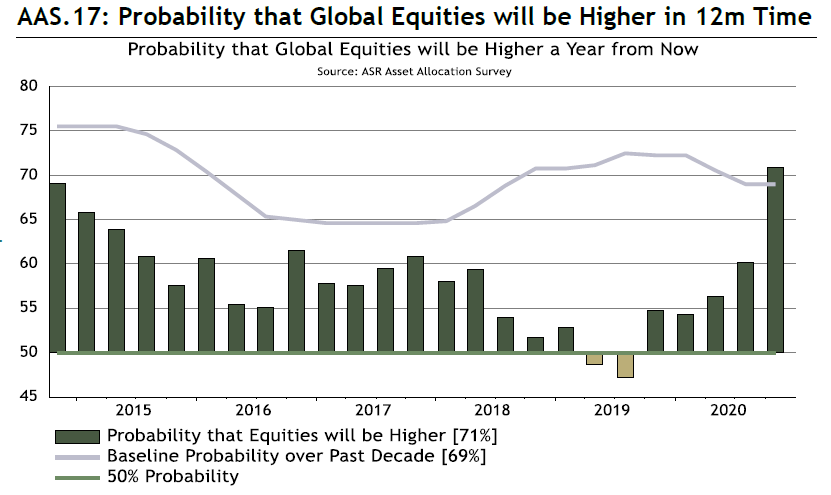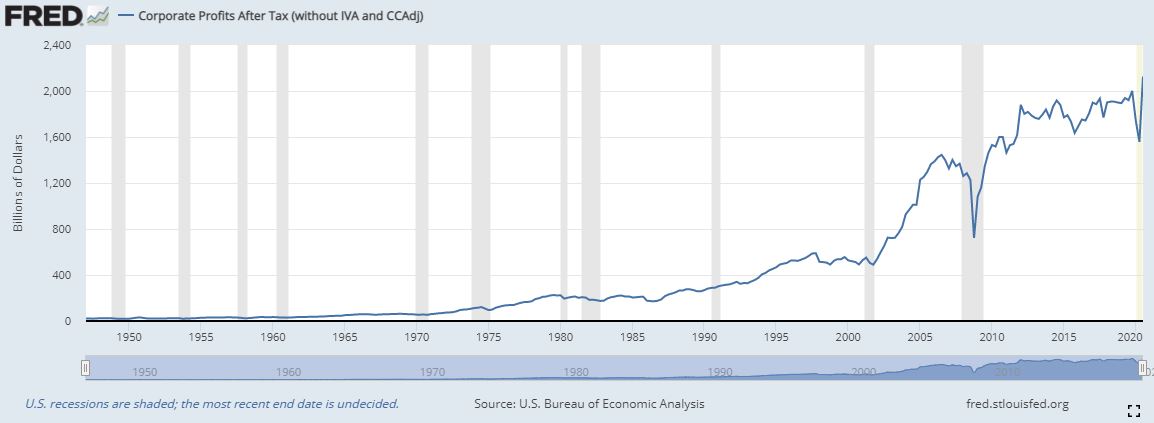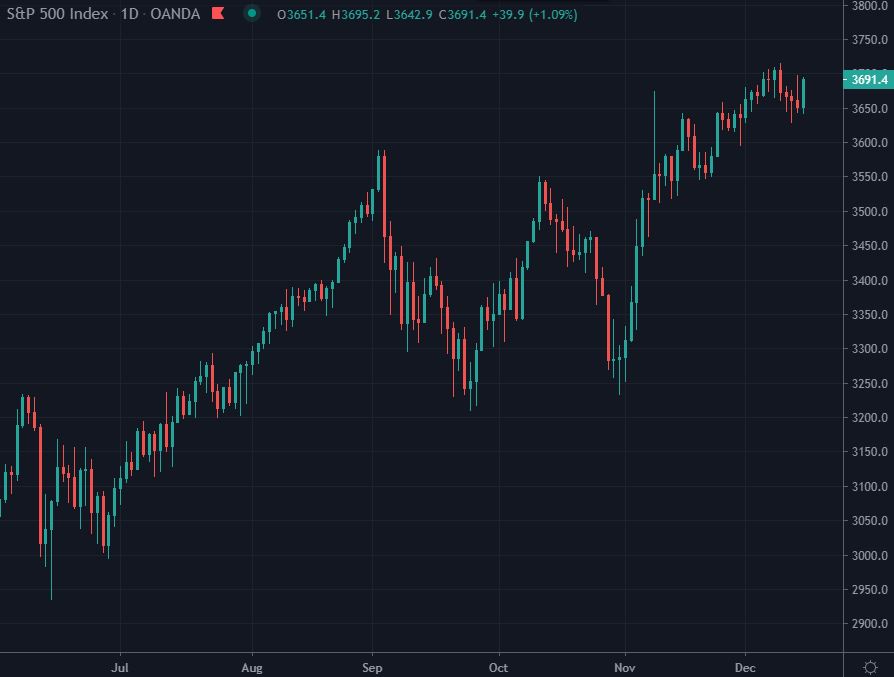Probably a more accurate statement would be that there have been few times in the history of stocks that investors have been this bleeming optimistic.
In this graph, we can see the results of a survey from Absolute Strategy Research, showing how investors are extremely confident in the stock market’s ability to forge ever higher through 2021.

This is of course but a single indicator. This morning’s Bloomberg Author’s Note lists more than a dozen other signs that point to record-high optimism in the financial markets.
At this point, stock investors are almost as bullish about stocks as bitcoiners are about bitcoin.
Yet, clearly there are soft spots in the underlying economy at this time. No really, who are we kidding?
Half the globe has seen many industries come to a virtual standstill, if not worse.
As we stated last week, the stock market is a terrible barometer of economic health. It is a good gauge of profits, however.
In this 80-year graph showing corporate profits in the U.S, we can clearly see those massive dips that coincide with the 2008-2009 financial crisis and the COVID-19 pandemic. Just look where it’s at now.

Yup, it’s higher than ever before. … Now tell me, does it really look like we need the central banks pumping oodles more cash into the balance sheets of companies?
Hint of caution
Historically speaking, having so much bullishness all at once is not necessarily a good thing.
Many times, it can indicate that the bubble is getting full, and that may in fact be the case, but on the other hand, just because a bubble is full, that doesn’t necessarily mean it can’t get bigger.
Now, I’ve personally been pessimistic on the markets at large ever since quantitative easing began in 2009.
Yet, it keeps rising, to the astonishment of many economists who continue to scratch their heads and wonder how a market that is so clearly manipulated continues to thrive and how an economy that’s clearly constrained continues to produce such impressive gains.
Still, measure for measure, analysts getting more bullish doesn’t necessarily translate into direct market movements.
Gold has come down. Yes, that makes sense given the newfound certainty of an incoming Joe Biden presidency and the fact that vaccinations are being shipped.
But the stock markets must be feeling a bit lightheaded after the S&P 500 gained an incredible 13% in November, seeing as how it has risen less than 1.5% so far this month.

Still, just as in bitcoin these last few days, the fact that we’re not plummeting from the new highs and retesting major support levels and continuing up from the highest levels ever higher is a pretty encouraging sign.
And with money being created like it’s water, it only makes sense that its value against hard assets will continue to fall.
Yeah, you always want to be cautious, but in this environment, cautious actually means staying away from risky assets like fiat currencies.
Why yes, yes it is. It has been for a long time, but like many risk assets, it has the incredible ability to perpetuate and thrive despite its apparent flaws, like a bridge that’s missing a few screws.
It might work very well for many years and afford people millions of journeys until one day, with or without warning, can suddenly give way.
Nobody can really say with much certainty when that might happen though, and for the sake of convenience, I think many of us would be willing to use an old bridge to avoid a long detour, especially if the chances of it buckling at the exact moment that we’re on it are extremely small.
We might not want to live on that particular bridge, though.
The more time we spend transacting in fiat money, the higher the probability of catastrophe.
As Elon Musk is fond of saying, we must become an interplanetary species if we’re to survive in the long run. So too we must have many forms of money in order to stabilize the system.
The more we allow consumers to choose their money, the more diversified the global economy will become, and that’s a rather pleasant thought, at least to me.


